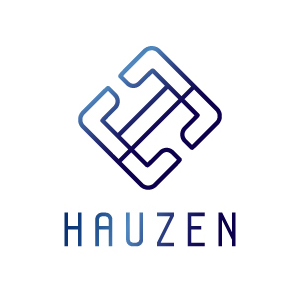The Securities and Futures Commission (“SFC”) issued two circulars on 2 November 2023 respectively concerning (i) the requirements and considerations of primary dealing of tokenised SFC-authorised products to the public (“Tokenised Products Circular”) and (ii) guidance to intermediaries engaging in tokenised securities-related activities (“Tokenised Securities Circular”) (collectively, the “Circulars”).
It is becoming increasingly clear that Hong Kong is rapidly becoming the Greater China (if not global) center for tokensation of real-world assets (or RWA). In this article, we will digest and discuss the key takeaways from the Tokenised Products Circular. Stay tuned for our next article on the Tokenised Securities Circular.
The meaning of “tokenization”
The SFC describes “tokenisation” as the process of recording claims on assets that normally exist on a traditional ledger, onto a programmable platform which includes the use of distributed ledger technology (“DLT”) in the security lifecycle. This can be seen as digital recordkeeping with integration of software rules and logic governing the registration and transfer process for the asset.
In the same vein, “tokenisation of investment products” is the creation of blockchain-based tokens that represent ownership in an investment product. The tokenised product can be recorded digitally on the blockchain, offered directly to end investors, distributed by SFC-licensed intermediaries, or traded among blockchain participants where permitted.
Why are we interested in the tokenization of investment products?
“Tokenization” and “tokenize” have become buzzwords in Hong Kong in recent months. We have seen banks offering “Gold Tokens” (i.e. retail tokenized gold), and we have also seen the Hong Kong government successfully roll out tokenised green bonds last year. In the blockchain community, the tokensation of real-world assets (or RWA) is gathering momentum and is currently the subject of much excitement and interest. By issuing the Circulars, the SFC is making it clear that it is committed to promoting fintech to all investors in Hong Kong in a healthy, responsible, and sustainable manner.
Regarding primary dealing of tokenised SFC-authorised investment products, the SFC adopts a see-through approach. It allows tokenisation as long as the underlying product meets all applicable authorisation requirements and additional safeguards to address the risks associated with tokenisation. However, for secondary trading, more caution is required to ensure investor protection, including proper token ownership records, robust trading infrastructure, liquidity support, and fair pricing.
Below are some of the pros and cons of the tokenisation of investment products:
| Pros | Cons |
| 1. Increased product efficiency, streamlined processes, and reduced settlement time.2. Increased transparency and traceability – immutable and auditable records of transactions.3. Expanded distribution channels to end-investors, which increases accessibility to investment products.4. Complements the development of the use of technology in financial markets in Hong Kong and around the world.5. Reduced operational costs by reducing reliance on intermediaries, which would lead to reduced transactional fees for investors. | 1. Regulatory uncertainty due to the constant evolution of tokenised investment products.2. Possible exposure to cyber threats, hacking, or technical vulnerabilities.3. Technology risks from the heavy reliance on technology infrastructure. Technical issues or security breaches could potentially impact the performance and value of tokenised investment products.4. Limited market adoption, as this is still relatively new. |
What are the SFC’s requirements?
Product providers of tokenised SFC-authorised investment (“Product Providers”) are subject to the following requirements:
| General Compliance | 1. Compliance with rules, regulations, product codes (including eligibility of Product Providers, product structure, investment and operational requirements, disclosure and ongoing compliance obligations).2. Compliance with the Tokenised Securities Circular, which will be explained in detail below. |
| Tokenisation Arrangement | Product Providers should:-1. Remain and be ultimately responsible for the management and operational soundness of the tokenisation arrangement adopted and record keeping of ownership, regardless of any outsourcing arrangement.2. Ensure that proper records of token holders’ ownership interests in the product are maintained and the tokenisation arrangement is operationally compatible with service providers involved.3. Have appropriate measures in place to manage and mitigate cybersecurity risks, data privacy, system outages and recovery, and maintain a comprehensive and robust business continuity plan.4. Not use public-permissionless blockchain networks without additional and proper controls (e.g. Product Providers to impose additional control by using a permissioned token).5. Confirm and, upon SFC’s request, demonstrate to the SFC’s satisfaction the management and operational soundness of the tokenisation arrangement, record keeping of ownership and the integrity of the smart contracts.6. Upon SFC’s request, obtain third party audit or verification on the management and operational soundness of the tokenisation arrangement, record keeping of ownership and integrity of the smart contracts.7. Upon SFC’s request, obtain satisfactory legal opinion to support its application. |
| Disclosure | The offering documents of a tokenised SFC-authorised investment product should set out clearly:1. the tokenisation arrangement, particularly, with clear disclosure on whether off-chain or on-chain settlement is final;2. the ownership representation of the tokens (e.g, legal and beneficial title of the tokens, ownership of / interests in the product); and3. the associated risks with the tokenisation arrangement such as cybersecurity, system outages, the possibility of undiscovered technical flaws, evolving regulatory landscape and potential challenges in application of existing laws. |
| Intermediaries | Distributors of tokenised SFC-authorised investment products (including Product Providers who distribute their own products) should be regulated intermediaries such as SFC-licensed corporations or registered institutions, and comply with the applicable requirements under existing rules, codes and guidelines (e.g, conduct client onboarding requirements and suitability assessment on their investors). |
| StaffCompetence | Product Providers should confirm to the SFC that they have at least one competent staff with relevant experience and expertise to operate and/or supervise the tokenisation arrangement and to manage the new risks relating to ownership and technology appropriately. |
| Prior Consultation or Approval | Prior consultation with the SFC is required for:-1. New investment products that have tokenisation features.2. Tokenisation of existing SFC-authorised investment products and such change may require prior approval. No prior approval is required for adding another tokenised unit/share class to the same fund if the tokenisation arrangement is substantially the same as the existing one. |
If you would like to learn more about tokenisation of products or RWA tokenzation, please contact us today.







